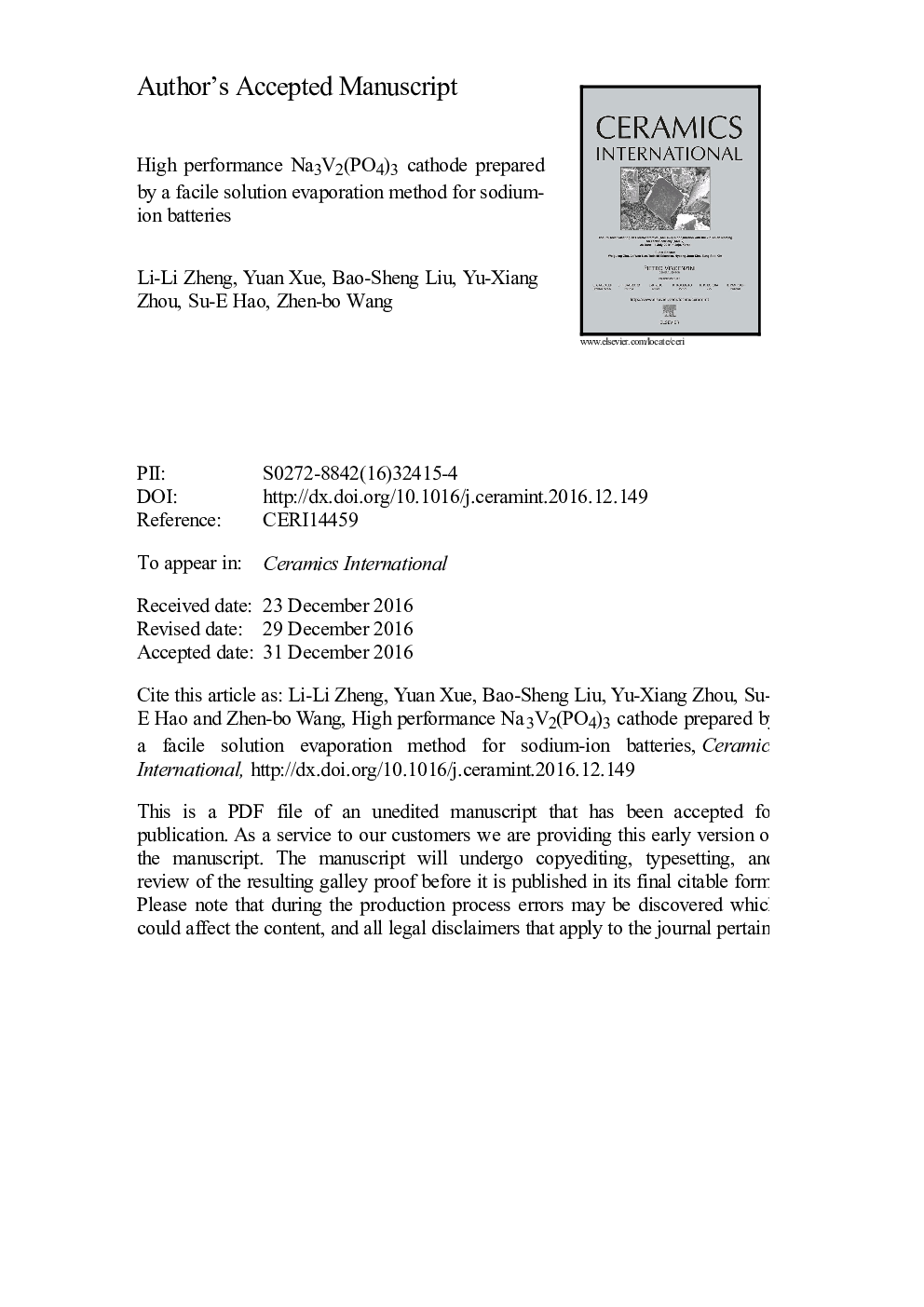| Article ID | Journal | Published Year | Pages | File Type |
|---|---|---|---|---|
| 5438625 | Ceramics International | 2017 | 22 Pages |
Abstract
Based on its abundance and low cost, sodium based batteries have aroused extensive attention for large scale energy-storage systems. In the current work, Na3V2(PO4)3 prepared by a facile solution evaporation method (denoted as NVP-SE) is used as cathode materials for sodium ion battery, with a control sample by solid state method. Raman spectrum and TEM are used to study the carbon layer coated on NVP-SE. The results show a highly graphitization and well-coated carbon layer, which is predominant by sp2 carbon. Graphitized carbon leads to high electrical conductivity, which can improve the rate performance of Na3V2(PO4)3 materials. Besides, GITT tests show high Na-ion diffusion coefficient. Even at 30 C, the NVP-SE cathode still delivers a capacity of 70 mAh gâ1. Moreover, the material also shows great long term cycling performance. After 500 cycles at 1 C rate and 1000 cycles at 5 C, its discharge capacities are still 103.3 mAh gâ1 and 85.4 mAh gâ1, which maintain 92.6% and 85.0% of its initial capacity. Thus, simple preparation process and excellent electrochemical performance for Na3V2(PO4)3/C extend it as a potential material for high power applications.
Related Topics
Physical Sciences and Engineering
Materials Science
Ceramics and Composites
Authors
Li-Li Zheng, Yuan Xue, Bao-Sheng Liu, Yu-Xiang Zhou, Su-E. Hao, Zhen-bo Wang,
